Presidential elections in South Korea
Presidential elections in South Korea determine who will serve as the President of South Korea for the next five years (formerly four, six, and seven).
 |
|---|
| This article is part of a series on the politics and government of the Republic of Korea |
|
|
|
|
Since the establishment of the First Republic in 1948, the presidential elections have taken place 20 times (19 excluding the March 1960 election whose results were invalidated after the April Revolution): in 1948, 1952, 1956, 1960 (in March and August), 1963, 1967, 1971, 1972, 1978, 1979, 1980, 1981, 1987, 1992, 1997, 2002, 2007, 2012, and 2017.
Prior to the Presidential Election Act of 1987, the elections were indirect. Since 1987, the president is elected directly by the public in a single round plurality vote (using the first-past-the-post simple plurality system) for a single, non-renewable five-year term.[1][2][3][4][5]
Procedure (1987–present)
The presidential election rules are defined by the South Korean Constitution and the Public Official Election Act.
Election campaign
The election campaign period, as set by the Election Law, is short – 23 days. According to the book Internet Election Campaigns in the United States, Japan, South Korea, and Taiwan, the election campaign periods in Korea (23 days for presidential elections and 14 days for National Assembly elections)[6] were made intentionally short in order to "prevent excessive campaign spending for long-running election campaigns and harmful effects from overheated elections", but, on the downside, "this works against new candidates who are not well known".[7]
Summary of past presidential elections
Winning party ideology: Conservative · Liberal · Independent
| # | Year | Winner | 2nd | 3rd | Notes | |
|---|---|---|---|---|---|---|
| First Republic | ||||||
| President and Vice President elected indirectly by the National Assembly[8] | ||||||
| 1 | 1948 | 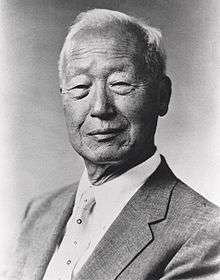 Syngman Rhee |
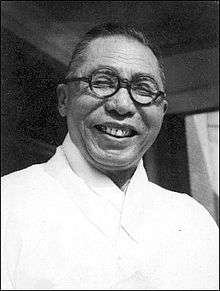 Kim Koo |
In the vice-presidential election, Yi Si-yeong (NARRKI) won over Kim Koo by 57.4% to 33.0%. | ||
| President and Vice President elected by popular vote | ||||||
| 2 | 1952 |  Syngman Rhee |
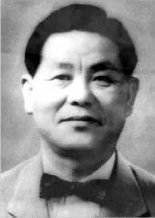 Cho Bong-am |
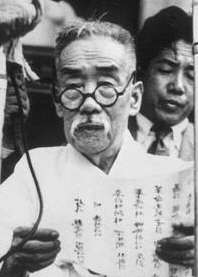 |
The election took place during the Korean War. In the vice-presidential election, independent Ham Tae-young won the election with 41.3%, defeating Liberal candidate Lee Beom-seok (25.5%) and Democratic Nationalist Chough Pyung-ok (8.1%). | |
| 3 | 1956 |  Syngman Rhee |
 Cho Bong-am |
In the vice-presidential election, Democratic Party candidate Chang Myon defeated Lee Ki-poong (Liberal) by 46.4% to 44.0%. | ||
| – | Mar 1960 |
 Syngman Rhee |
Rhee re-elected unopposed due to the death of his Democratic Party opponent Chough Pyung-ok. In the vice-presidential election, Lee Ki-poong (Liberal) won with 79.2% over Chang Myon (Democratic) with 17.5%. The results of both elections were annulled as fraudulent after the April Revolution. | |||
| Second Republic | ||||||
| President elected indirectly by both houses of the National Assembly; Vice Presidency abolished | ||||||
| 4 | Aug 1960 |
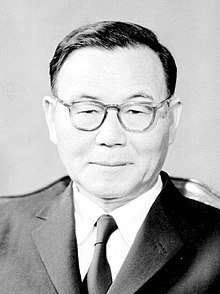 Yun Bo-seon |
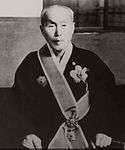 Kim Chang-sook |
The only presidential election of the Second Republic. | ||
| Third Republic | ||||||
| President elected by popular vote | ||||||
| 5 | 1963 | 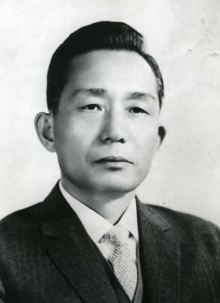 |
 Yun Bo-seon |
First election after the May 16 coup. | ||
| 6 | 1967 |  |
 Yun Bo-seon |
|||
| 7 | 1971 |  |
.png) Kim Dae-jung |
|||
| Fourth Republic | ||||||
| President elected by the National Council for Reunification | ||||||
| 8 | 1972 |  |
First election after the October Yushin. Park re-elected unopposed. | |||
| 9 | 1978 |  |
Park re-elected unopposed. | |||
| 10 | 1979 | 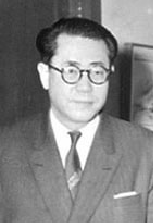 Choi Kyu-hah |
First election after Park Chung-hee's assassination. Acting President Choi elected as President unopposed. | |||
| 11 | 1980 | .jpg) Chun Doo-hwan |
First election after the coup d'état of December Twelfth. Chun elected unopposed. | |||
| Fifth Republic | ||||||
| President elected indirectly | ||||||
| 12 | 1981 | .jpg) |
DKP Yu Chi-song Democratic Korea (7.7%) |
The only presidential election of the Fifth Republic. | ||
| Sixth Republic | ||||||
| President elected by first-past-the-post popular vote with single-term limit | ||||||
| 13 | 1987 | 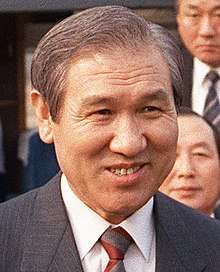 |
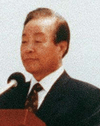 |
.png) Kim Dae-jung |
First free and fair direct presidential election in South Korean history.[9] Also the first election to feature a female candidate.[10] | |
| 14 | 1992 |  Kim Young-sam |
.png) Kim Dae-jung |
.jpg) Chung Ju-yung |
||
| 15 | 1997 | .png) |
.jpg) Lee Hoi-chang |
NNP Lee In-je National New (19.2%) |
||
| 16 | 2002 | .jpg) Roh Moo-hyun |
.jpg) Lee Hoi-chang |
|||
| 17 | 2007 | 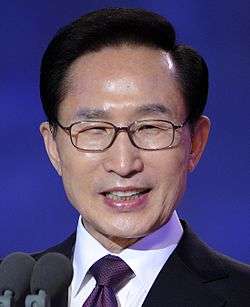 Lee Myung-bak |
.jpg) |
.jpg) Lee Hoi-chang |
||
| 18 | 2012 | 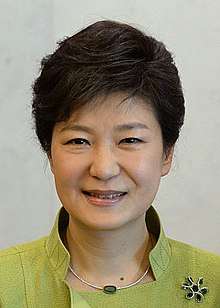 Park Geun-hye |
|
|||
| 19 | 2017 | 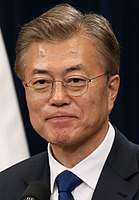 Moon Jae-in |
.jpg) Hong Jun-pyo |
.jpg) Ahn Cheol-soo |
Held after the impeachment of Park Geun-hye. | |
See also
References
- "A Primer on the 19th South Korean Presidential Election in 2017". The Seoul Times. Retrieved 2018-03-11.
- Jae-jin Yang (28 September 2017). The Political Economy of the Small Welfare State in South Korea. Cambridge University Press. pp. 96–. ISBN 978-1-108-41590-3.
- Andrew J. Nathan (2010). How East Asians View Democracy. Columbia University Press. pp. 41–. ISBN 978-0-231-14535-0.
- Country Profile: South Korea, North Korea. The Unit. 2001.
- "Процедура выборов президента Южной Кореи". RIA Novosti (in Russian). 2017-05-09. Retrieved 2018-03-11.
- Shoko Kiyohara; Kazuhiro Maeshima; Diana Owen (17 October 2017). Internet Election Campaigns in the United States, Japan, South Korea, and Taiwan. Springer International Publishing. pp. 63–. ISBN 978-3-319-63682-5.
- Shoko Kiyohara; Kazuhiro Maeshima; Diana Owen (17 October 2017). Internet Election Campaigns in the United States, Japan, South Korea, and Taiwan. Springer International Publishing. pp. 159–. ISBN 978-3-319-63682-5.
- Lee (1984), p. 378.
- Kil, Byung-Ok (2001). Security Policy Dynamics: Effects of Contextual Determinants to South Korea. Ashgate. p. 58.
South Korea's political forms had been authoritarian during the Cold War and the first free and fair presidential election was held in 1987.
- Kim, Younghwa. "Hong Suk Ja: Pursuing Women's Rights in South Korea". Retrieved 22 November 2016.